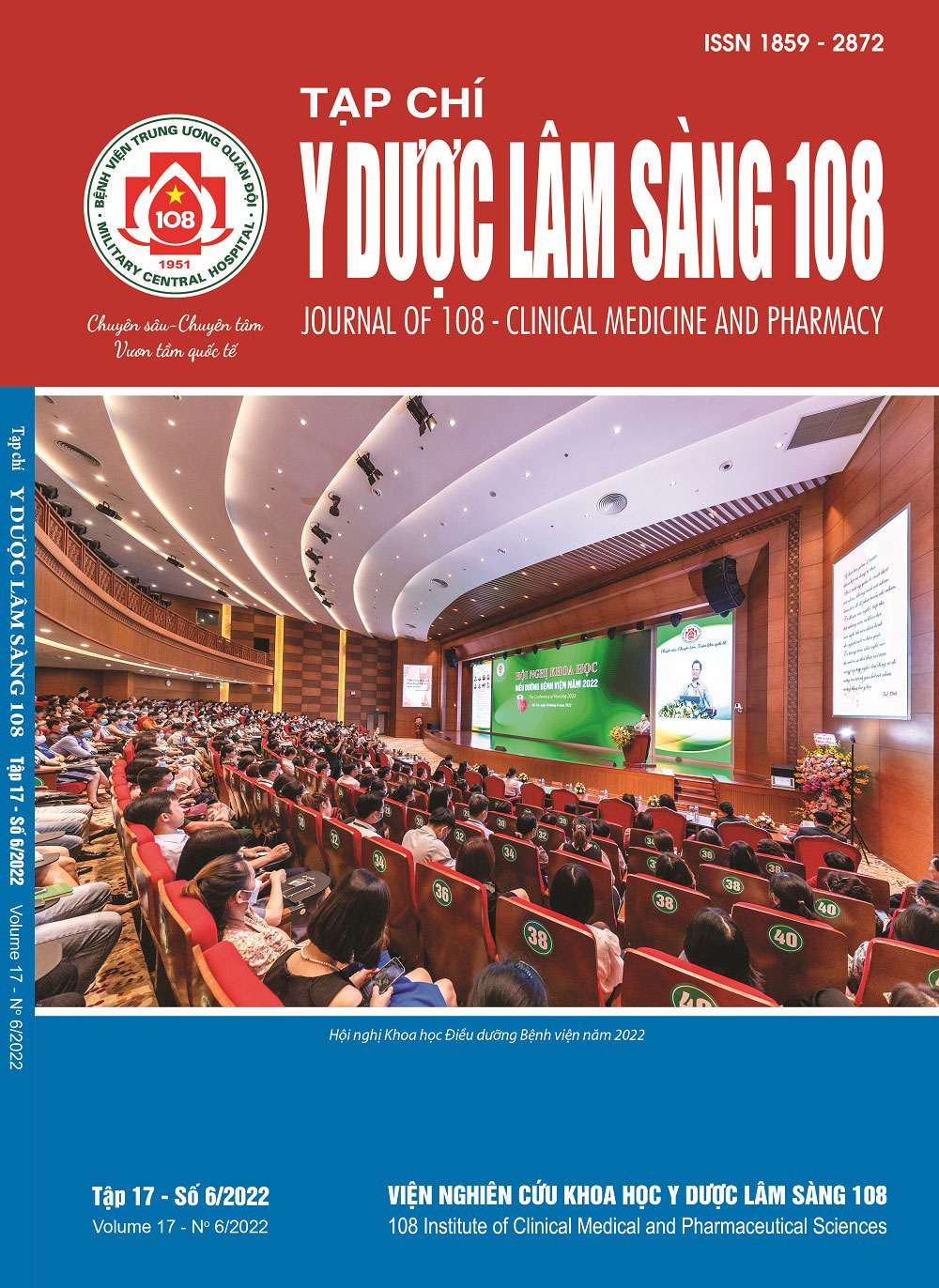Evaluating dyslipidemia and association between lipid and 24-hour proteinuria in patients with chronic kidney disease
Main Article Content
Keywords
Abstract
Objective: To evaluate dyslipidemia status and the relation between 24-hour proteinuria and dyslipidemia in patients with chronic kidney disease (CKD) at 108 Military Central Hospittal in 2022. Subject and method: A cross-sectional study was conducted on 102 over-18-years old patients with CKD, eGFR < 30ml/min/1.73m2 at 108 Military Central Hospittal from July, 2021 to May, 2022. A control group was 50 healthy persons. Data was collected at the time of hospitalization through face-to-face interviews and medical records. The tests were conducted at the Department of Biochemistry as soon as the hospitalization of patients. Result: There was a difference with p<0.05 in triglycerides and HDL-C levels and a difference with p>0.05 in cholesterol and LDL-C between the 2 study groups. There were positive regression between triglyceride (p=0.0001; r = 0.46) and cholesterol (p=0.0001; r = 0.37), and negative regression between HDL-C (p=0.001, r = -0.33) with 24-hour proteinuria. There was no regression between LDL-C with 24-hour proteinuria. Conclusion: The level of triglyceride was increased and HDL-C decreased significantly, cholesterol and LDL-C levels not changed significantly in CKD patients. The triglyceride and cholesterol levels regressed positively and HDL-C levels regressed negatively to 24-hour proteinuria, and LDL-C did not regress to 24-hour proteinuria in CKD patients.
Article Details
References
2. Liyanage T, Ninomiya T, Jha V et al (2015) Worldwide access to treatment for end-stage kidney disease: A systematic review. Lancet 385(9981): 1975-1982.
3. Oley RN, Parfrey PS, Sarnak MJ (1998) Clinical epidemiology of cardiovascular disease in chronic renal disease. Am J Kidney Dis 32: 112-119.
4. Tsutomu H, Noriyuki S, Rieko K et al (2022) Dyslipidemia in diabetic kidney diseaseclassified by proteinuria and renal dysfunction: A cross-sectional study from a regionaldiabetes cohort. J Diabetes Investig 13(4): 657-667.
5. Sharanappa P, Ajith K, Sandhya S (2018) To evaluate Lipid Profiles in Patients with Chronic Kidney Disease in RajaRajeswari Medical College and Hospital, Bengaluru, Karnataka, India. The Journal of Medical Sciences 4(2): 31-34.
6. Mohammed GA, Mohammed OM, Fenk BM (2018) Dyslipidemia among Patients with End Stage Renal Disease on Maintenance Hemodialysis. Kurdistan Journal of Applied Research 2(4): 123-128.
7. Lee DM, Knight-Gibson C, Samuelsson O et al (2002) Lipoprotein particle abnormalities and the impaired lipolysis in renal insufficiency. Kidney Int 61: 209-218.
8. Sarnak MJ, Coronado BE, Greene T et al (2002) Cardiovascular disease risk factors in chronic renal insufficiency. Clin Nephrol 57: 327-335.
9. Matsushita¬¬¬CK, M van der Velde, Astor BC et al (2010) Chronic Kidney Disease Prognosis. Association of estimated glomerular filtration rate and albuminuria with all-cause and cardiovascular mortality in general population cohorts: A collaborative meta-analysis. Lancet 375: 2073-2081.
 ISSN: 1859 - 2872
ISSN: 1859 - 2872
